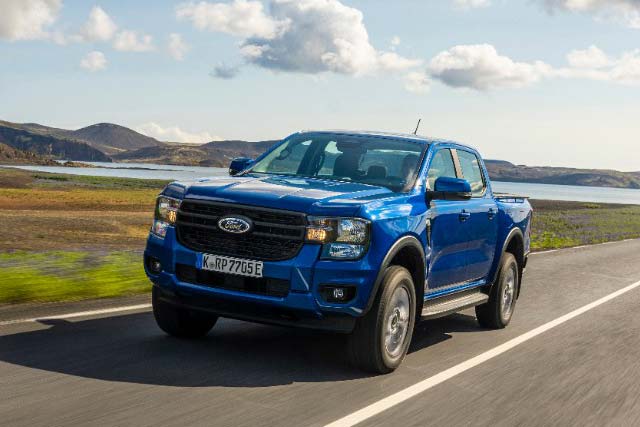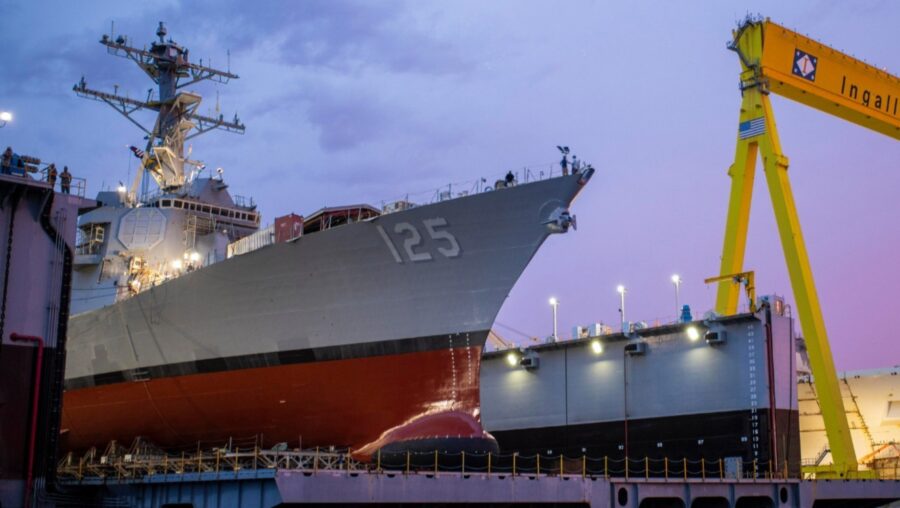Sweden eyes Gripen upgrade amid ‘urgent need’ for improved electronic warfare
Following a decision by Swedish political leadership in 2019 to improve the country’s military capabilities, weapons procurement has surged, said Brig. Gen. Lars Helmrich.


A Swedish Air Force Saab JAS 39 Gripen departs from Kallax Air Base, Lulea, Sweden, during the multinational exercise, Astral Knight 23 Part 6, Aug. 29, 2023. (U.S. Air Force photo by Airman 1st Class Albert Morel)
PARIS AIR SHOW — Sweden is exploring electronic warfare upgrades for the country’s indigenous Gripen fighter jet amid a NATO-wide push to enhance warfighting capabilities, according to Swedish Air Force officials.
“In terms of electronic warfare, I would say that there is an urgent need, especially in Europe, to complement what the US have been helping us with over time,” Col. Frederik Süsskind, the lead officer for the Gripen’s development, said in a briefing with reporters Sunday on the eve of the Paris Air Show. “We are investigating, together with [Swedish military procurement arm] FMV, how to further develop the Gripen Echo in terms of those capabilities down the line.”
Süsskind said the air force’s “first and foremost priority” is to field Stockholm’s newest Gripen E fighter manufactured by domestic aerospace firm Saab, where the first of 60 jets are expected to arrive this year. Some of those aircraft could be modified with enhanced electronic warfare capabilities, Süsskind added, or more jets could be ordered down the road with the new features.
Sweden’s ambition for better EW features comes amid intense electronic warfare on the battlefield in Ukraine, where officials have stressed that cat-and-mouse conflict in the spectrum requires constant improvements to keep the edge. Enhanced EW capabilities for the Gripen would offer the fighter better protection against threats like air defenses.
Following a decision by Swedish political leadership in 2019 to improve the country’s military capabilities, weapons procurement has surged, said Brig. Gen. Lars Helmrich, the FMV’s director of the air and space systems division. Since 2021, the FMV has witnessed over a 350 percent increase in dollars doled out to industry annually, Helmrich said, and the organization’s staff has also increased over 50 percent as a result.
Sweden is in the process of replacing virtually every legacy platform in the country’s inventory, as the formerly neutral country aims to field a range of new aircraft from trainers to cargo jets. As part of the recapitalization drive, a plan to acquire new GlobalEye early warning aircraft has been accelerated, Helmrich said, describing the delivery has been “split in two steps.”
“It will arrive quicker, but I will not say exactly when,” he said. (Sweden in 2022 placed orders for two GlobalEyes, and exercised an option for a third last year.)
Generally, Helmrich said, capabilities like hypersonic weapons, low observability platforms and artificial intelligence will be key to winning future conflict. Following his presentation, Helmrich told Breaking Defense a possible stealth platform could be a drone wingman, though he underscored that is not currently in Sweden’s plans, particularly as the country studies requirements for a future fighter.
And on hypersonics, Helmrich said that’s “probably something” Sweden would either need to develop as part of an international cooperation or acquire off the shelf. Not every NATO country necessarily needs hypersonic weapons, Helmrich said, but the alliance as a whole should have them. Alongside a hypersonic stockpile, he added Sweden will also need to defend against the fast-flying weapons as part of integrated air and missile defense scheme in NATO, where countries “bring a piece of the puzzle.”
For much of recent history and prior to joining NATO, Sweden had to plan to fight on its own, said Swedish Air Force Commander Maj. Gen. Jonas Wikman. For example, the military developed tactics like disappearing into the forest to survive an enemy attack. Now, Wikman said the country’s task is to share its tactical prowess with the rest of NATO and, at the same time, to learn from partner countries to bolster security amid the specter of a Russian threat.
“The pressure on the Swedish Air Force is really high right now,” Wikman said. “I mean, we really feel the pressure.”
































































































![[Updated] U.S. Air Force Mobilizes F-22s and F-35s as Situation in Middle East Escalates](https://theaviationist.com/wp-content/uploads/2025/06/F-22_F-35_CENTCOM-top.jpg)

![[Updated] Sudden Deployment of Dozens of U.S. Air Force Tankers Raises Questions](https://theaviationist.com/wp-content/uploads/2025/03/Stratotanker100Years_2-e1750080240327.jpg)












































